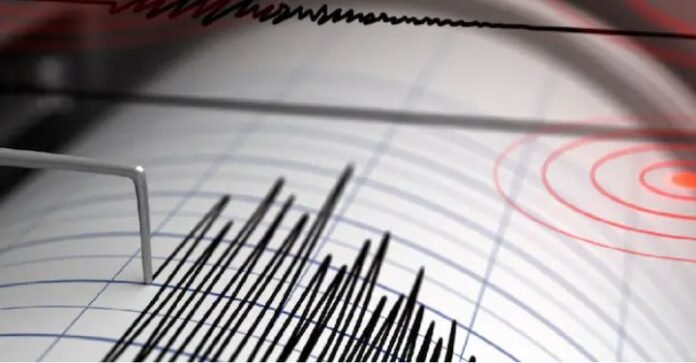On April 2, 2025, a 6.0 magnitude earthquake struck Kyushu, Japan, a region known for its seismic activity. The quake was centered off the coast of the island, according to the Japan Meteorological Agency (JMA). While the tremor shook buildings and disrupted daily activities, authorities were quick to assure the public that there were no casualties or significant damage reported.
Kyushu, one of the four major islands of Japan, has long been prone to seismic events due to its location along the Pacific “Ring of Fire.” The region frequently experiences both large and small earthquakes. The magnitude of this earthquake, though considered strong, did not cause the expected level of devastation due to several factors, including the depth of the quake and the preparedness of local authorities and residents.
Epicenter and Magnitude Details
The earthquake’s epicenter was located approximately 60 kilometers offshore from the southern coast of Kyushu, at a depth of 40 kilometers beneath the Earth’s surface. The tremor was felt across the island, including major cities such as Fukuoka, Kagoshima, and Nagasaki.
The Japan Meteorological Agency issued a warning immediately after the earthquake hit, advising the public to stay alert for aftershocks. Thankfully, no large aftershocks followed, and there was no risk of a tsunami, though authorities did monitor sea levels closely in case of any fluctuations.
Response and Preparedness
The response from emergency services was swift, with local authorities deploying search and rescue teams to vulnerable areas. Although the initial fear of widespread destruction was palpable, the preparedness in Japan, especially in earthquake-prone areas, meant that the population was largely unaffected. Japan has one of the most advanced earthquake preparedness programs globally, which includes building codes designed to withstand seismic activity, early warning systems, and public education campaigns.
Residents of Kyushu were advised to remain cautious and report any damage to local authorities. However, no significant structural damage was reported to infrastructure such as bridges, highways, or buildings. The local rail systems, including the Shinkansen high-speed train, were briefly suspended for safety checks but resumed operations swiftly.
Seismic Activity in Kyushu
Kyushu’s position along the subduction zone where the Philippine Sea Plate is moving towards the Eurasian Plate makes it a hotspot for seismic activity. Over the past few decades, the island has experienced several earthquakes of varying magnitudes. However, with the improvements in earthquake prediction and infrastructure, Japan has reduced the risk of major loss of life from such natural disasters.
In 2016, Kyushu was the site of a powerful earthquake that caused significant damage in Kumamoto. Since then, significant efforts have been made to upgrade the region’s infrastructure to better withstand future seismic events.
Public Reactions
While the quake caused some initial panic, especially in cities near the epicenter, the calm response from the authorities helped maintain order. Social media platforms saw a flurry of activity as citizens shared their experiences, and many expressed relief as the initial reports suggested minimal damage. Some buildings were reported to have swayed, but there were no reports of structural failures.
Local businesses in the affected areas closed temporarily, but many were able to reopen within hours of the earthquake’s occurrence. Some shopping malls and public facilities also experienced temporary evacuations, though these were more precautionary measures than reactions to significant threats.
Aftershocks and Continuing Monitoring
While no major aftershocks were reported in the immediate aftermath of the 6.0 magnitude earthquake, the Japan Meteorological Agency continued to monitor the region closely for any seismic activity. They also warned residents to be prepared for potential smaller aftershocks that could occur in the coming days.
Authorities reminded the public to follow emergency protocols, including staying away from damaged buildings and moving to open areas in case of aftershocks.
Conclusion
Japan’s response to the earthquake was a testament to the country’s commitment to disaster preparedness and management. The quick mobilization of emergency services, combined with resilient infrastructure and public awareness, helped ensure that the quake, despite its moderate strength, did not cause significant harm. As of now, the region continues to monitor for aftershocks, but the immediate impact of the earthquake remains minimal.

